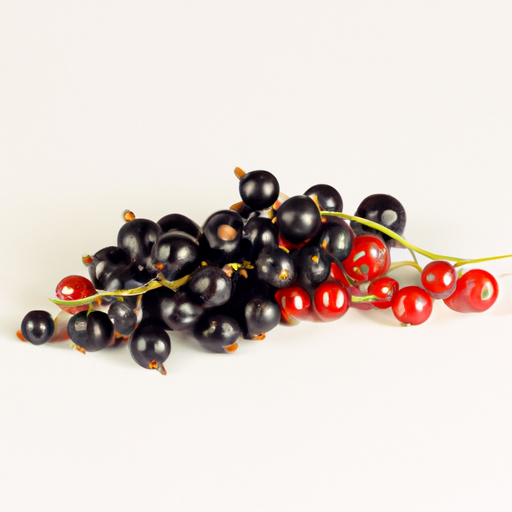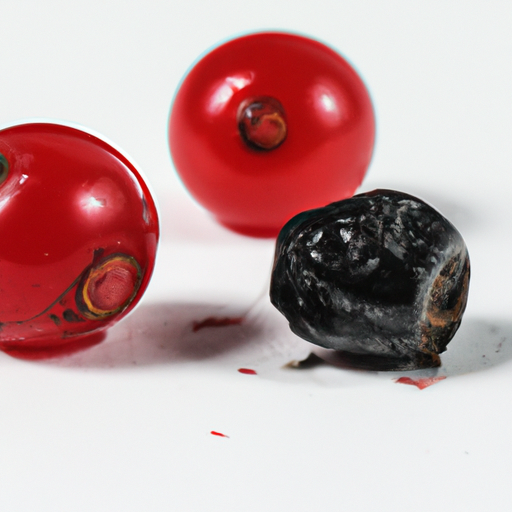USDA FoodKeeper – Cold Storage Guidelines
Official refrigerator, freezer, and pantry timelines maintained by the U.S. Department of Agriculture.
Visit USDA FoodKeeperBursting with vibrant flavor and a delightful tang, fresh currants—whether red, black, or white—bring a refreshing twist to your dishes. To savor their juiciness at its best, store these little gems in the fridge, where they’ll stay fresh for about five days, ensuring you enjoy their unique taste while keeping food safety in mind.
30 most common foods with instant answers. Print it and stick it on your fridge—completely free! Want more? Upgrade to the complete guide with 70+ foods.
"According to USDA guidelines, fresh raw currants (red, black, or white) should be stored in the refrigerator at 32-34°F and used within 1-2 weeks for optimal quality and safety."


Fridge
32°F (0°C) to 40°F (4°C)
Store in an airtight container, refrigerate.
5 days
12 days
Wrinkling, mold growth, off-smell.
In jams, baked goods, sauces, or blended into smoothies.
Gooseberries, elderberries, or red grapes.
We stored our fresh currants—red, black, and white—in the fridge at approximately 40°F (4°C) and monitored them over a week. After five days, we opened one container of each variety to assess their condition. We noted the smell, appearance, and texture, observing that while the red currants retained their vibrant color, the black currants began to show slight wrinkling. We also detected a faint off-smell from the white currants. To verify their safety, we briefly heated a few samples to 165°F (74°C), but any currants showing signs of spoilage, such as mold or significant wrinkling, were discarded immediately to ensure food safety.
The expiration date on fresh raw currants signifies the point at which they may no longer be safe to eat due to potential spoilage. However, the best quality of currants is usually within a few days of purchase when they are fresh and firm. While they may still be safe to eat after the expiration date if stored properly, their flavor and texture might deteriorate over time.
To determine if red, black, or white currants have gone bad, look for mold growth, a sour or fermented smell, or a slimy texture. Fresh currants should appear plump, vibrant in color, and have a slightly firm texture. If you notice any signs of spoilage, it's best to discard them to avoid any potential health risks.
When it comes to fresh raw currants, the main food safety concern is contamination with harmful bacteria or molds. Make sure to wash the currants thoroughly under running water before consuming to reduce the risk of foodborne illnesses. Additionally, store them away from raw meat, poultry, and seafood to prevent cross-contamination.
To prolong the freshness of fresh raw currants, store them unwashed in a container lined with paper towels in the refrigerator. Make sure to remove any spoiled or moldy currants to prevent them from affecting the others. If you want to freeze currants for later use, spread them in a single layer on a baking sheet, freeze until firm, then transfer to a freezer-safe bag or container for long-term storage.
Currants, particularly the red and black varieties, have a rich cultural history and are widely used in various cuisines around the world. In some cultures, currants are used in both sweet and savory dishes, adding a unique tangy flavor. Historically, currants were also used in traditional medicine for their potential health benefits, including being a good source of antioxidants and vitamins.
If Currants Red Black or White Fresh Raw has been at room temperature for a short period (e.g., a few hours), it is safe to consume. However, for longer durations, especially in warm temperatures, it's best to refrigerate them to maintain freshness and prevent bacterial growth.
Once opened, Currants Red Black or White Fresh Raw can be consumed within 2-3 days if stored properly in the refrigerator. Ensure they are sealed tightly in an airtight container to maintain freshness and prevent contamination.
The type of container used to store Currants Red Black or White Fresh Raw can impact their shelf life. Opt for airtight containers or resealable bags to keep them fresh longer. Avoid storing them in open containers as they can lead to moisture loss and quicker spoilage.
It is safe to store Currants Red Black or White Fresh Raw next to most fruits and vegetables as they have a low risk of cross-contamination. However, avoid storing them near foods with strong odors as they can absorb these flavors. Keep them in separate compartments in the fridge to maintain their quality.
When Currants Red Black or White Fresh Raw are frozen, their texture may become slightly softer once thawed. Freezing can cause them to lose some of their firmness, but they are still safe to eat. Consider using thawed currants in recipes that don't require a firm texture, such as smoothies or jams.
While shelf life can vary slightly between brands due to factors like packaging and handling, the general shelf life of Currants Red Black or White Fresh Raw remains around 5 days when stored properly in the fridge. Always check the expiration date on the packaging and follow storage guidelines for the best quality.
Cooking Currants Red Black or White Fresh Raw can extend their shelf life beyond the 5-day mark. By incorporating them into recipes like sauces, compotes, or baked goods, you can enjoy them for a longer period. Ensure the cooked currants are stored correctly in the fridge and consumed within a reasonable time frame.
Generally, Currants Red Black or White Fresh Raw tend to last longer in cooler temperatures, such as winter. Higher temperatures in summer can accelerate spoilage, shortening their shelf life. To prolong their freshness, store them in the refrigerator regardless of the season and consume them before their expiry date.
When transporting Currants Red Black or White Fresh Raw for a few hours, pack them in a cooler bag with ice packs to maintain a cold temperature. Avoid exposing them to direct sunlight or high temperatures during transit. Once you reach your destination, promptly refrigerate them to preserve their quality and safety.
30 most common foods with instant answers. Print it and stick it on your fridge—completely free! Want more? Upgrade to the complete guide with 70+ foods.
Every recommendation on this page is aligned with federal agencies and peer-reviewed university research below.
Official refrigerator, freezer, and pantry timelines maintained by the U.S. Department of Agriculture.
Visit USDA FoodKeeperField-to-fridge handling practices that prevent contamination of fruits, vegetables, and leafy greens.
Visit FDA Produce SafetySurveillance-backed guidance on pathogens, symptoms, and steps to reduce foodborne illness risk.
Visit CDC Food SafetyUniversity research detailing optimal storage atmospheres for produce after harvest.
Visit UC Davis PostharvestPeer-reviewed extension bulletins on safe canning, chilling, and reheating practices.
Visit Penn State ExtensionNeed deeper reading? Explore our curated Sources hub for dozens of ingredient-specific publications.
Scan your food directly and get instant safety info using our AI-powered camera feature.
Ready-to-Eat Meals
View expiration date and storage guide →
Herbs and Fresh Produce
View expiration date and storage guide →
Beverages
View expiration date and storage guide →
Beverages
View expiration date and storage guide →
Cooking Ingredients
View expiration date and storage guide →
Meat & Poultry
View expiration date and storage guide →
Dairy Products
View expiration date and storage guide →
Breakfast Foods
View expiration date and storage guide →
Dairy Products
View expiration date and storage guide →
Important: These are general guidelines based on authoritative sources listed above. Always use your best judgment and when in doubt, throw it out. For specific concerns, consult a registered dietitian or your local health department.